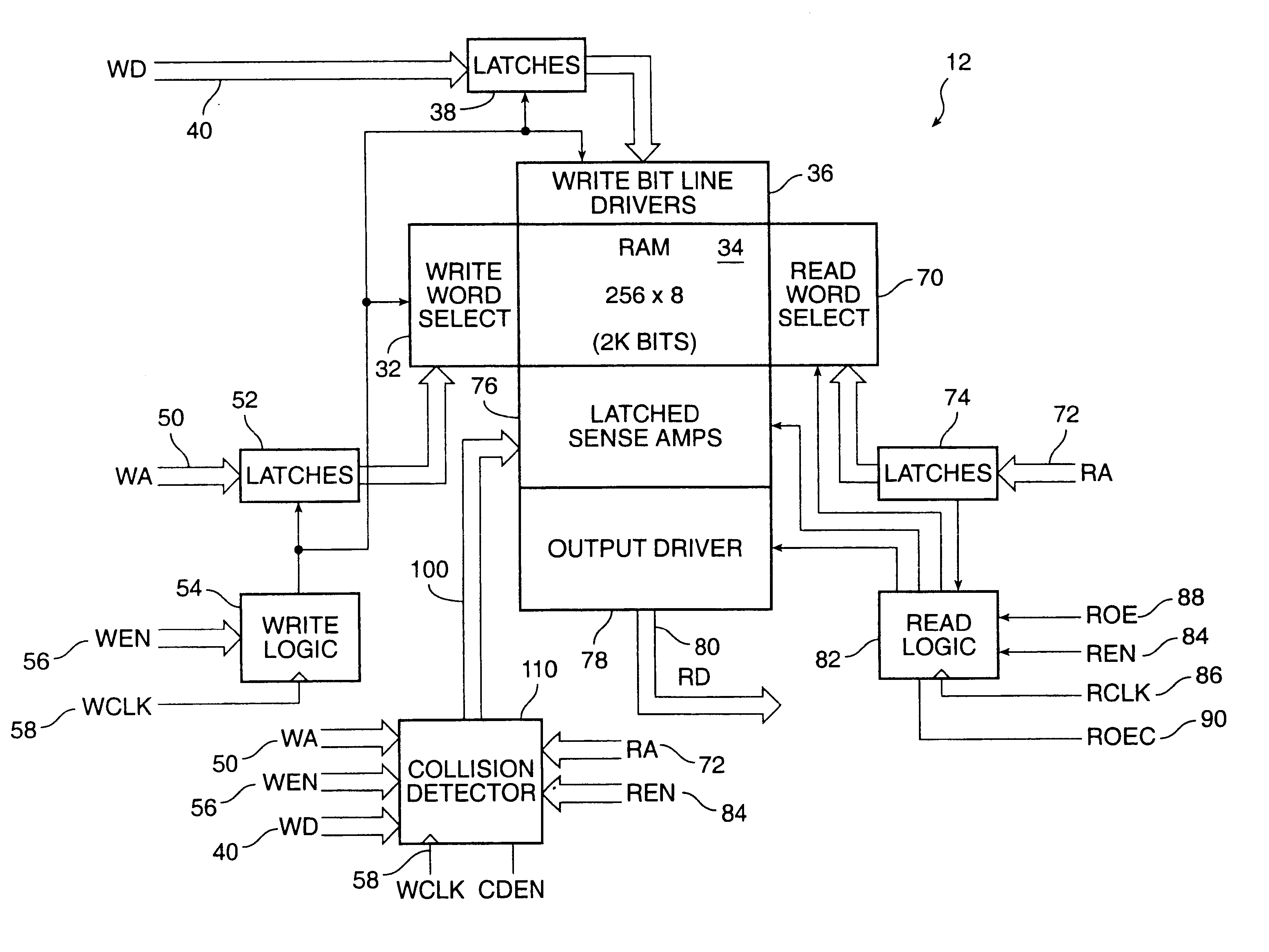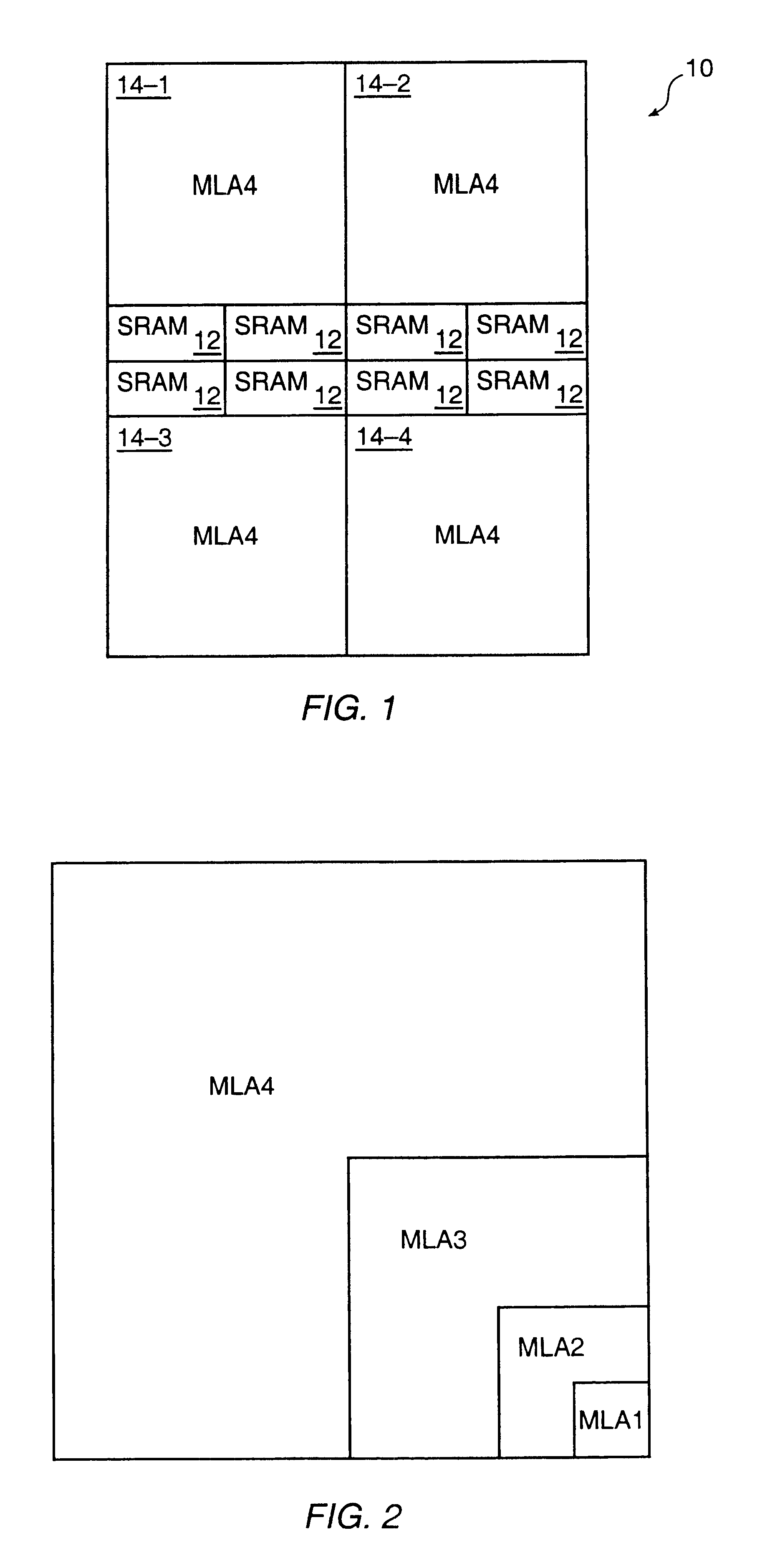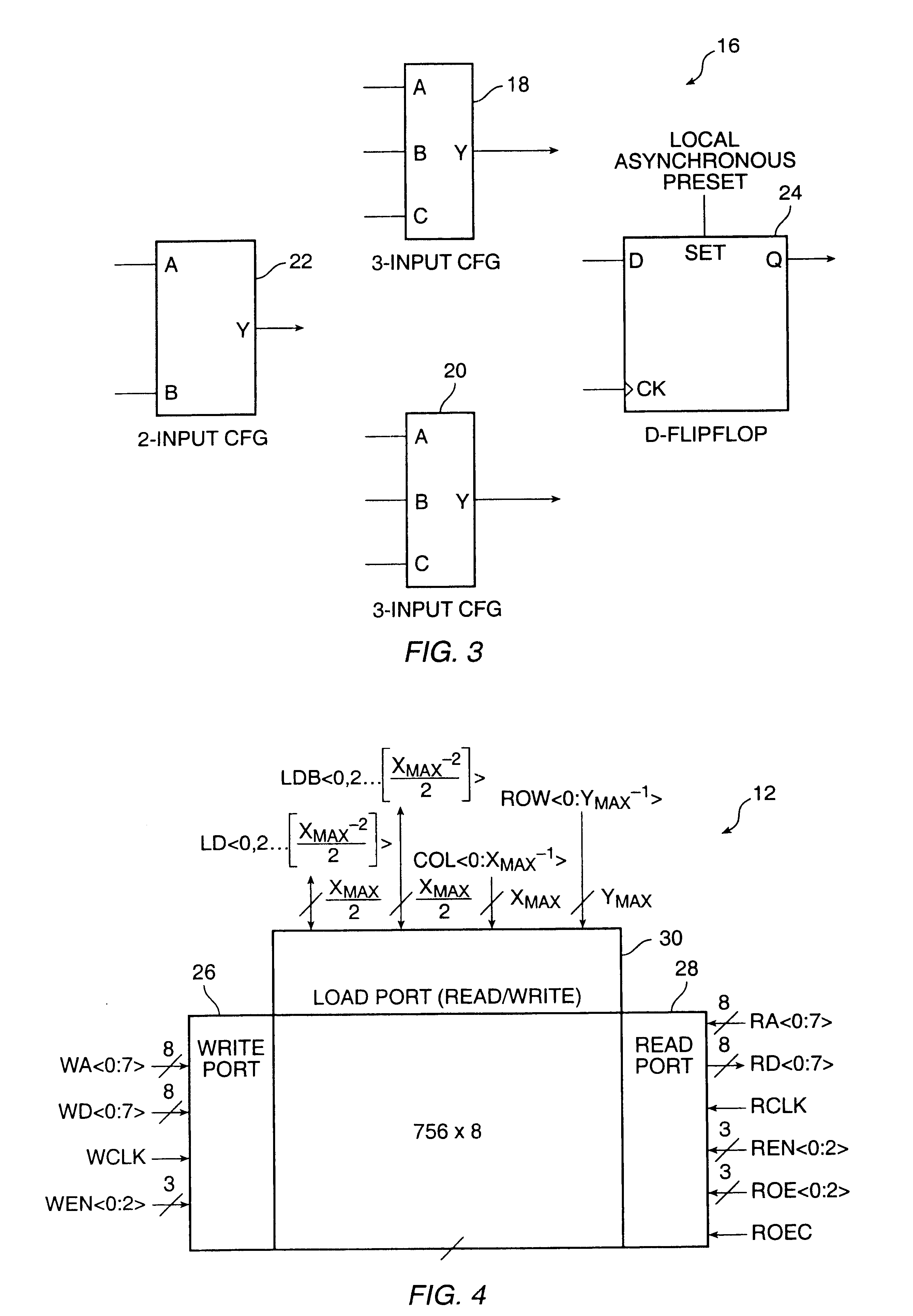Embedded static random access memory for field programmable gate array
a random access memory and gate array technology, applied in the field of embedded static random access memory for field programmable gate array (fpga) architecture, can solve the problems of inconvenient use, low memory utilization rate, and inability to detect faulty hardware by configuration test,
- Summary
- Abstract
- Description
- Claims
- Application Information
AI Technical Summary
Benefits of technology
Problems solved by technology
Method used
Image
Examples
Embodiment Construction
Those of ordinary skill in the art will realize that the following description of the present invention is illustrative only and not in any way limiting. Other embodiments of the invention will readily suggest themselves to such skilled persons.
According to the present invention, in FIG. 1 a block diagram of the FPGA core 10 in a flexible, high-performance SRAM based FPGA architecture having user-assignable SRAM blocks 12 according to the present invention is illustrated. The FPGA core 10 includes a plurality of logic function modules disposed within a multi-level architecture (MLA) of routing resources. The blocks 14-1 through 14-4 in FPGA core 10 illustrate a grouping of logic modules in the MLA termed MLA4. In the preferred embodiment, there are approximately 50K gates combined in blocks 14-1 through 14-4. The SRAM blocks 12 comprise 16K bits of user-assignable SRAM divided into eight dedicated blocks of 2K bits. The user-assignable SRAM blocks 12 will be more fully described bel...
PUM
 Login to View More
Login to View More Abstract
Description
Claims
Application Information
 Login to View More
Login to View More - R&D
- Intellectual Property
- Life Sciences
- Materials
- Tech Scout
- Unparalleled Data Quality
- Higher Quality Content
- 60% Fewer Hallucinations
Browse by: Latest US Patents, China's latest patents, Technical Efficacy Thesaurus, Application Domain, Technology Topic, Popular Technical Reports.
© 2025 PatSnap. All rights reserved.Legal|Privacy policy|Modern Slavery Act Transparency Statement|Sitemap|About US| Contact US: help@patsnap.com



